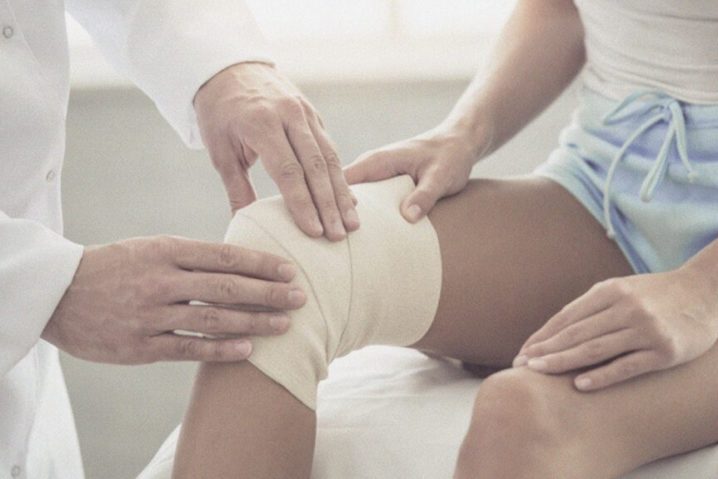Journal
Getting to know you series – Patella Dislocation/Instability
Arthro Health
Andrew discusses Patella Dislocation/Instability, it's causes, it's treatment and prevention

As you read this post, you may have a specific kneecap (Patella) in mind! Perhaps you’ve suffered your own dislocation, or you know someone who has. Hopefully, that kneecap is now back in place. Unless you happen to be on your way to an emergency department at this very moment. Which, we hope, is unlikely.
So now you want to know: how serious is this? And what happens next? Good questions. First, though, let’s look at some biology.
The patella (knee cap) is a small piece of bone in front of the knee that slides up and down the femoral groove (groove in the femur bone) during bending and stretching movements of the leg. The ligaments on the inner and outer sides of the patella hold it in the femoral groove and avoid dislocation of the patella from the groove. Patellar instability results from one or more dislocations or partial dislocations (subluxations). Patellar dislocation is a condition that occurs when the kneecap or the patella completely shifts out of the groove towards the outside of the knee joint.
Normally, the kneecap fits in the groove, but an uneven groove can cause the kneecap to slide off, resulting in partial or complete dislocation of the kneecap.
Any damage to these ligaments may cause the patella to slip out of the groove, either partially (subluxation) or completely (dislocation). This misalignment can damage the underlying soft structures such as muscles and ligaments that hold the knee cap in place. Once damaged, these soft structures are unable to keep the patella (knee cap) in position. Due to this, repeated subluxation or dislocation makes the knee unstable and the condition is known as knee instability.
Symptoms to look out for:
Patients with knee instability experience different signs and symptoms such as:
- Pain, especially when standing up from a sitting position
- Feeling of unsteadiness or tendency of the knee to “give way” or “buckle”
- Recurrent subluxation
- Recurrent dislocation
- Severe pain, swelling and bruising of the knee immediately following subluxation or dislocation
- Visible deformity and loss of function of the knee after subluxation or dislocation
- Sensation changes such as numbness or even partial paralysis below the dislocation, as a result of pressure on the nerves and blood vessels
Common causes
Various factors and conditions may cause patellar instability. Often, a combination of factors can cause this abnormal tracking and include the following:
- Anatomical defect: Flat feet or fallen arches and congenital abnormalities in the shape of the patella bone can cause misalignment of the knee joint.
- Abnormal “Q” angle: The “Q” angle is a medical term used to describe the angle between the hips and knees. The higher the “Q” angle, such as in patients with knock knees, the more the quadriceps pull on the patella, causing misalignment.
- Patellofemoral arthritis: Patellar misalignment causes uneven wear and tear and can eventually lead to arthritic changes to the joint.
- Improper muscle balance: Quadriceps, the anterior thigh muscles, function to help hold the kneecap in place during movement. Weak thigh muscles can lead to abnormal tracking of the patella, causing it to subluxate or dislocate.
Diagnosis and Treatment
Your surgeon diagnoses the condition by collecting your medical history and physical findings. They may also order certain tests such as X-rays, MRI or CT scans to confirm the diagnosis.
Treatment for instability depends on the severity of the condition and based on the diagnostic reports. Initially, your surgeon may recommend conservative treatments such as physical therapy, use of braces and orthotics. Your doctor may prescribe pain relieving medications symptomatic relief. However, when these conservative treatments yield an unsatisfactory response, surgical correction may be recommended.
Considering the type and severity of the injury, the surgeon decides on the surgical correction. Your surgeon may perform a lateral retinacular release. The surgeon releases or cuts, the tight ligaments on the lateral side (outside) of the patella, enabling the patella to slide more easily in the femoral groove.
Your surgeon may also perform a procedure to realign the quadriceps mechanism by tightening the tendons on the inside or medial side of the knee.
If the misalignment is severe, tibial tubercle transfer (TTT) will be performed. This procedure involves the surgeon removing a section of bone where the patellar tendon attaches on the tibia. The bony section is then shifted and properly realigned with the patella and reattached to the tibia with two screws.
Following the surgery, your surgeon and rehabilitation team will develop a program for better outcomes and quicker recovery.
As always, should you want any further information or have any questions, please contact our rooms, we are here to help.